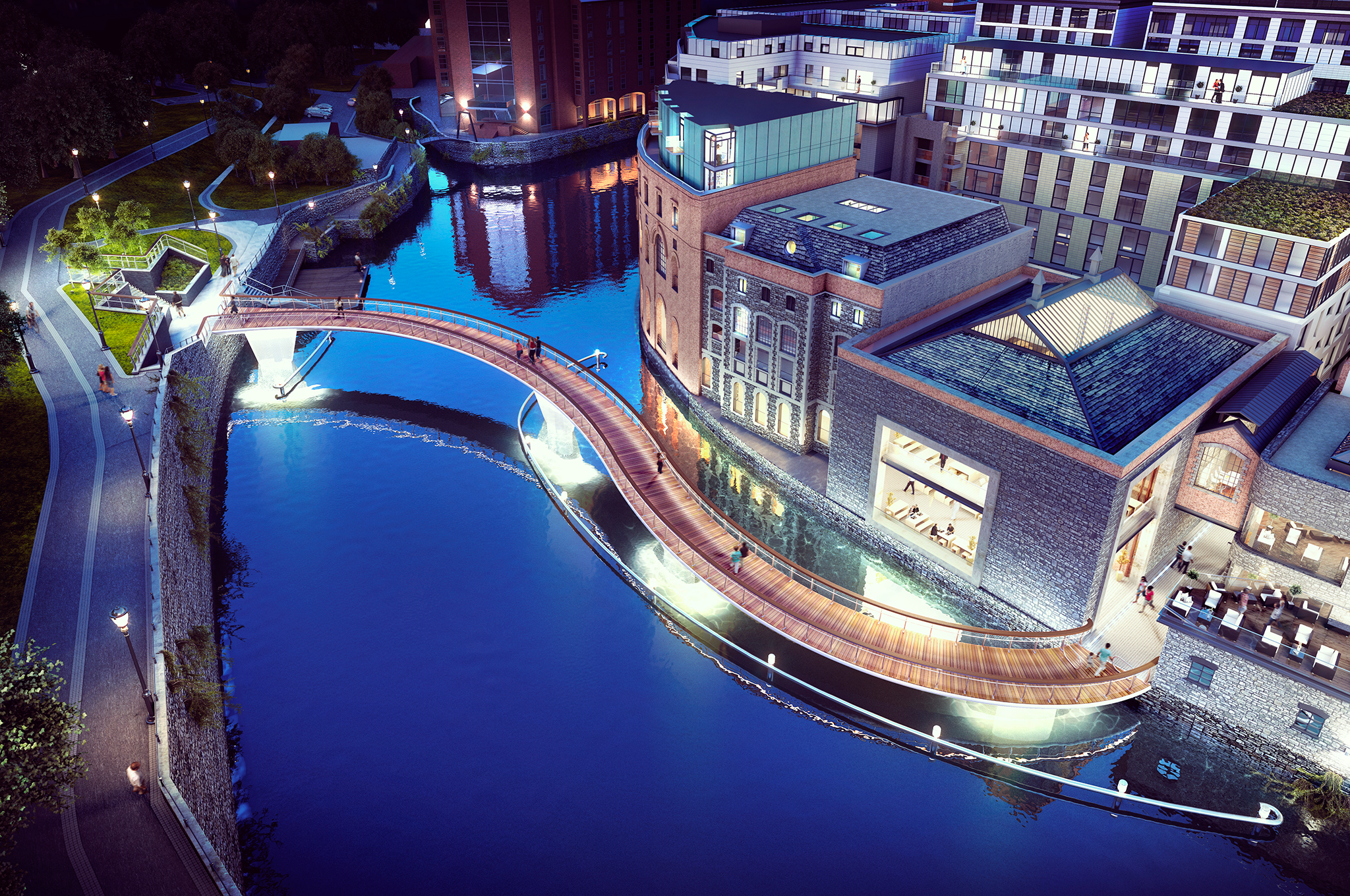Over and above architecture: Bridges that are going places
Spectacular bridges are going up all over the world, with four planned in London alone

Your support helps us to tell the story
From reproductive rights to climate change to Big Tech, The Independent is on the ground when the story is developing. Whether it's investigating the financials of Elon Musk's pro-Trump PAC or producing our latest documentary, 'The A Word', which shines a light on the American women fighting for reproductive rights, we know how important it is to parse out the facts from the messaging.
At such a critical moment in US history, we need reporters on the ground. Your donation allows us to keep sending journalists to speak to both sides of the story.
The Independent is trusted by Americans across the entire political spectrum. And unlike many other quality news outlets, we choose not to lock Americans out of our reporting and analysis with paywalls. We believe quality journalism should be available to everyone, paid for by those who can afford it.
Your support makes all the difference.When we humans see a massive river or a gorge between us and where we want to get to go, it’s human instinct to want to build a socking great bridge over the gap.
Despite what politicians might make some of us think we want, the one urge we truly have is to be connected to everyone else. Bridges are the symbolic glue that binds us together.
Today’s superbridges are being built longer and higher than ever – the Jiaozhou Bay Bridge in China is 16 miles long, while Lord Foster’s Millau Viaduct in France is taller than the Eiffel Tower. We seem to have a new appetite for show-off bridges too: Bristol is getting a new “Twisting Bridge” over the Avon, and the Firth of Forth in Scotland will be crossed in 2016 by a huge new bridge, the Queensferry Crossing.
Four new bridges are planned to span the Thames in London alone. A timely new exhibition at the Museum of London in Docklands, called Bridge, uses photos, paintings and video to look back at the history of bridging the river through the capital – and at future plans for links from Pimlico to Nine Elms, the Diamond Jubilee Bridge from Chelsea Harbour to Battersea Park, the new East London Bridge from Beckton to Thamesmead, and Thomas Heatherwick’s flashy Garden Bridge from Temple across to the South Bank.
The latter has aroused the most interest because, covered with plants and trees, it’s a complete flight of fancy – a kind of Jurassic Park-on-Thames. The squat East London Bridge won’t have the same razzmatazz as the Garden Bridge, but its bus and cycle lanes could transform life for the residents of Thamesmead.
Bridges have the capacity to make life better. “Good bridge design improves peoples’ lives,” says bridge designer Martin Knight, “...and, unlike most buildings, the formal life of most bridges is 120 years.” He adds: “I’m reminded of this by the fabulous Maidenhead Railway Bridge by Brunel, which I pass daily.”
A good bridge can define a city – San Francisco’s Golden Gate, Sydney’s Harbour Bridge and Mostar’s Stari Most, painstakingly rebuilt after the Bosnian War. Knight was the project architect on Gateshead’s Winking Eye Bridge – which won the Stirling Prize in 2002.
He’s also just been shortlisted for an award by the Institute of Structural Engineers for his new Te Matau Pohe Bridge in Whangerei, New Zealand, which is shaped like a Maori fishing hook. He says he “takes great satisfaction that the engineering and architecture are indivisible on this bridge”.
Today, we’re sensibly slotting in new bridges for people and bikes, rather than just for cars. Copenhagen has just put up the Cykelslangen (literally “Cyclesnake”) which slithers over the city’s waterways, carrying a new bike lane.
It could be the model for the Skycycle elevated bike lanes that London aspires to build. The Danes always go further though – they even want to plonk a cycle lane on the Oresund Bridge, star of the TV show The Bridge, so that they could pedal over to Malmo in Sweden.
“Bridges are ‘people places’ – particularly pedestrian bridges. It’s important they are destinations – as well as a means of getting across something,” says Mark Whitby, who’s rustling up a new crossing over the River Lea in London’s Docklands. “The City Island Bridge, with its 90-metre long bench, will be the biggest red Dali-esque sofa in the world when it opens in November,” he says proudly.
These are austere times. We can’t afford to dream quite like our forebears did, yet some dreams are hard to shake off – plans for ever longer and more elaborate bridges just seem to keep coming back, like a villain who refuses to die at the end of a slasher movie.
Superbridges from Italy to Sicily, from Malta to Gozo, from Spain to Morocco, from Argentina to Uruguay, from Russia to Alaska, and even from Britain to Ireland, have all been on the drawing board.
But one crazy crossing that will definitely be built next year is the world’s highest and longest glass bridge – it’ll span a canyon at Zhangjiajie in Hunan Province, China. The 400m-long glass bridge won’t be one for vertigo sufferers, but its ambitiousd esign goes over and above what has gone before.
‘Bridge’ runs until 2 November at the Museum of London, Docklands
Join our commenting forum
Join thought-provoking conversations, follow other Independent readers and see their replies
Comments